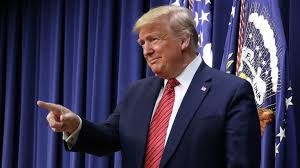
The trade war was never going to be easy for China. There are several reasons for this.
The easiest one boils down to third-grade math. In round numbers, the U.S. imports about $500 billion per year from China. In turn, China imports about $150 billion per year from the U.S. The difference is a $350 billion-per-year trade deficit with China that Trump wants to eliminate (or at least greatly reduce).
When Trump put tariffs on $200 billion of Chinese goods, the Chinese initially retaliated with dollar-for-dollar tariffs on U.S. goods. The problem is they ran out of headroom.
China is now proposing tariffs on almost 100% of its imports from the U.S., but Trump still has $300 billion to go. When Trump puts tariffs on those goods (which he is planning to do over the coming months), China has no way to retaliate directly because they simply don’t buy enough from the U.S.
If China wants to retaliate, they’ll have to use nontariff measures. These can include bans on acquisitions of Chinese companies by U.S. companies and limits on U.S. direct investment in China. But these restrictions are already tough, so it’s not clear how much more China can do.
The theft of intellectual property has been going on for decades and is continuing. That’s a big problem, but it’s not new and does not represent an escalation, because it’s already there. What can China do?
One so-called “nuclear option” is for China to dump its massive holdings of U.S. Treasury notes, about $1.4 trillion in value, as described in this article. The idea is that if China dumps these Treasuries, prices will drop, interest rates will go up, stocks will drop and the U.S. housing market will hit a wall. It’s a kind of economic warfare.
Everything about this scenario is wrong. China won’t dump Treasuries because they would be the biggest loser (because they own so many themselves and you can’t sell them all at once). The president can freeze China’s accounts with one phone call if any economic damage begins. Besides, there are plenty of other buyers of U.S. Treasuries including U.S. banks and, if needed, the Federal Reserve.
The bottom line is that China is stuck with a losing hand. And Trump knows it.
Institutional investors can schedule a proof of concept with the world’s first predictive data analytics firm combining human and artificial intelligence with complexity science. Check out Jim Rickard’s company at Meraglim Holdings to learn more.




